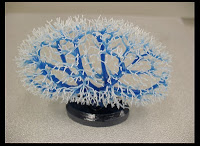 Recently, the House Committee on Science and Technology’s Subcommittee on Research and Science Education held a hearing allowing witnesses to stress the urgent need for continued R&D funding for US colleges and universities. Dr. John R. Raymond, VP for Academic Affairs and Provost at the Medical University of South Carolina (MUSC), discussed the Research Infrastructure Improvement (RII) grant given to the State of South Carolina in July 2009. Dr. Raymond went on to explain how this grant is allowing MUSC to maintain a competitive edge in the emerging field of “organ printing." While it is extremely complex, organ printing essentially allows those who suffer from illnesses such as diabetes and organ failure the ability to "donate" excess fat cells to create new organs for themselves.
Recently, the House Committee on Science and Technology’s Subcommittee on Research and Science Education held a hearing allowing witnesses to stress the urgent need for continued R&D funding for US colleges and universities. Dr. John R. Raymond, VP for Academic Affairs and Provost at the Medical University of South Carolina (MUSC), discussed the Research Infrastructure Improvement (RII) grant given to the State of South Carolina in July 2009. Dr. Raymond went on to explain how this grant is allowing MUSC to maintain a competitive edge in the emerging field of “organ printing." While it is extremely complex, organ printing essentially allows those who suffer from illnesses such as diabetes and organ failure the ability to "donate" excess fat cells to create new organs for themselves.
So where does 3D Systems come into play? One of the many challenges facing researchers and physicians in this field is the limited thickness of printed tissue due to the lack of blood supply. According to Dr. Raymond, "To manufacture more complex organs, one must successfully engineer a vascular supply, which will require a 3-D tree-like network of blood vessels." To test the bioprinting capability of current rapid prototyping technology, Drs. Vladimir Mironov and Roger Markwald of MUSC led a team that was successfully able to manufacture a 3-D "plastic" kidney using our high resolution ProJet™
3D Systems is proud to be part of advancing the scientific and medical use of our technologies for the benefit of all.
